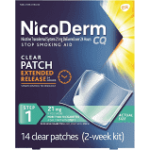Surprise-Laden Blog Post Titles

Blog post titles have a multifaceted job to do, arousing readers’ curiosity while still assuring them they’ve come to the right place. One compromise I’ve suggested to blog content writers is using a two-tiered title, combining a “Huh?” (to get attention) with an “Oh!” (to make clear what the post is actually going to be about).
The latest business book covers use this “compromise solution” all the time. Here are some samples of recently published titles (The main or “Huh?) title is shown in bold, with the “Oh!” subtitle below it):
When to Jump
If the Job you have isn’t the Job You Want
Do Nothing
Discover the Power of Hands-Off Leadership
The Persuasion Code
How Neuromarketing Can Help You Persuade Anyone, Anywhere, Any Time
When
The Scientific Secret of Perfect Timing
Originals
How Non-conformists Move the World
The Culture Code
The Secrets of Highly Successful Groups
The Energy Bus
10 Rules to Fuel Your Life, Work, and Team with Positive Energy
In This Together
How Successful Women Support Each Other in Work and Life
Unlike book publishers, we business blog content writers simply don’t have the option of using “mysterious” titles, since search engines will be will be matching the phrases used in our titles with the terms typed into readers’ search bars. So, just how can we get those keyword phrases in while still being enticingly enigmatic?
One possible way is including the “Oh!” part of our title in the meta tag description (the blurb of information that shows up beneath your clickable website address on search engine results pages).
Worth a try, anyway, with the idea being to pique readers’ curiosity and maintain the surprise, but meanwhile, giving the search engines the “advance scoop”.





Follow us online!